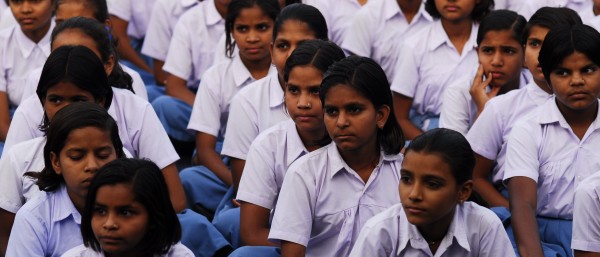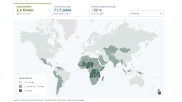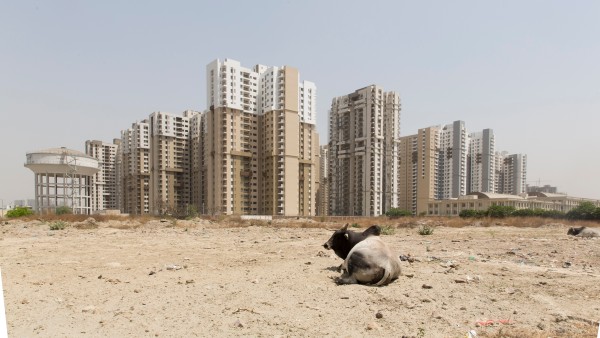More and more people are living on Earth. Yet while fewer and fewer children are being born in Germany, every woman in Nigeria gives birth to 5.6 children on average. Where are population numbers rising and falling? Taking a look at our interactive world map provides some insight.
By the end of the century it is estimated there will be more than 10.4 billion people living in the world. Although it is expected that the global population will grow more slowly than before - and will even shrink again from 2098. We will still see the current 8 billion people in the world rising by roughly another third by 2050. There will be fewer people living in Europe than before, continued strong growth in the African population, while the number of people in Asia should peak in the course of this century.
More than half of the growth in the Earth's population by 2050 will be attributable to just eight countries: Congo, Egypt, Ethiopia, India, Nigeria, Pakistan, the Philippines and Tanzania. India will soon replace China as the world's most populous country.
Population trends are driven largely by the number of births. The average number of children per woman in Africa is more than double that of other global regions. This is compounded by increasing life expectancy. Someone born today can expect to live until almost 72 years of age based on the global average. But life expectancy at birth varies strongly, from less than 60 years in Sub-Saharan Africa to more than 80 years in the European Union.
The age profile is changing as a result: by 2050, the number of people over the age of 60 will double. It is not only industrialised countries that are growing older, but also emerging countries, especially in Asia and Latin America. Africa is the continent with the youngest population and therefore needs to take action regarding education, health care and economic prospects for its young people.
1,4 Kinder
Durchschnitt pro Frau, 2010Quellen: World Development Indicators, The World Bank; UNCTADstat, eigene Berechnungen
Source
This article was published in CHANCEN spring/summer 2014 „Alter“.
To German editionThus far, demographic developments have gone hand in hand with robust global economic growth; when average per capita income rose sharply, the number of those living in absolute poverty noticeably fell. However, the distribution of global prosperity remains very uneven, both between and within countries.
Debates on the winners and losers of globalisation also focus on this finding. “This is why we cannot ease up on our efforts, and we must ensure equal opportunities as well as participation in economic success,” warned Dr Jörg Zeuner in his position as Chief Economist of KfW before adding: “Ecological challenges will rise with the growth of the population, too.” Industrialised and emerging countries are the main perpetrators of greenhouse gas emissions. Global climate change and related damage, however, impact primarily on the poorest countries, which are least capable of adapting. Migration flows from rural areas to cities and the resulting urbanisation also need to be tackled. So there are lots of challenges to overcome.
Published on KfW Stories: 23 August 2017, updated 1 July 2022






Data protection principles
If you click on one of the following icons, your data will be sent to the corresponding social network.
Privacy information